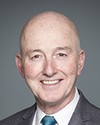A lot of work has actually been done over time in this respect. One of the major challenges we found in that program, previously pensions and now awards, was that injuries were often not adequately documented. Veterans Affairs has worked closely over time with the Canadian Forces to try to ensure that the so-called form CF 98 report on injuries is in fact completed when it should be and that it forms part of the member's record. A lot of work has been done with the Canadian Forces in terms of trying to improve the exchange of information and ensuring timely access to service records in order to expedite the disability claim process and to help those things move forward.
We're currently working with the Canadian Forces on how to leverage the work they have done on electronic health records, for example. They've moved more into the realm of electronically managing the medical information of members, which enables Veterans Affairs to access that type of data. Work is currently ongoing in that respect.
Those are some of the initiatives we've had with the forces in terms of managing that very type of information.





